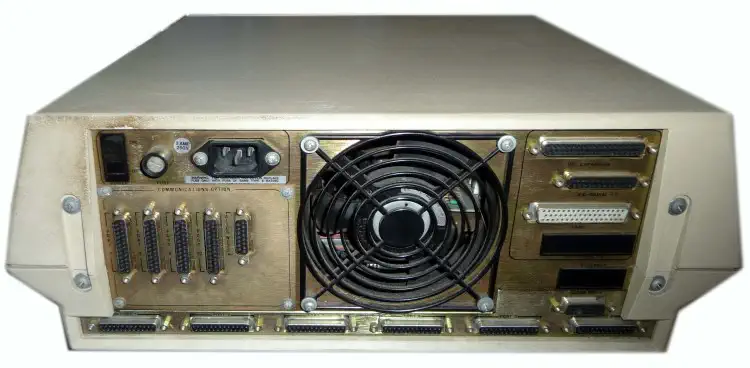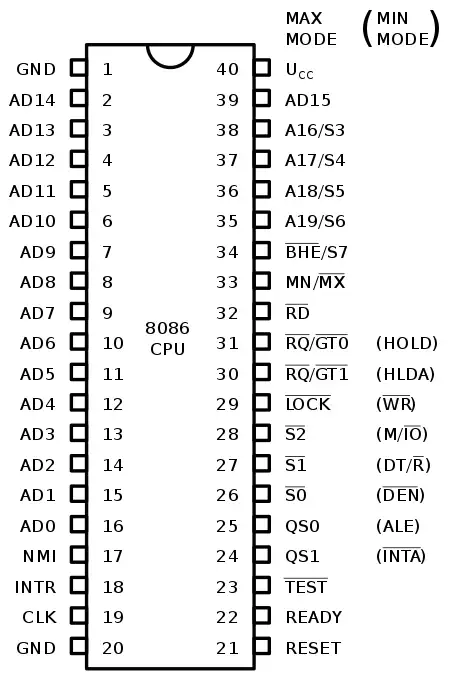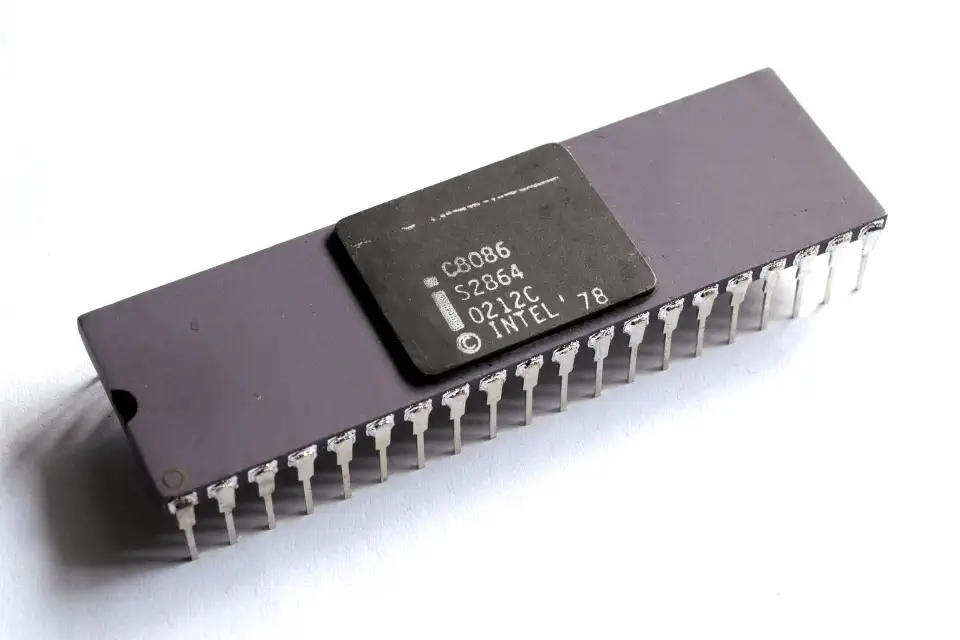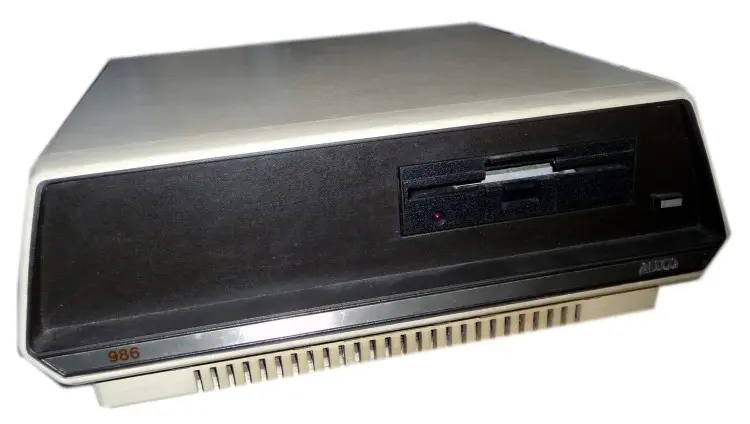
Multiple Processor and Memory Management
While the 8086 serves as the master CPU, the two Z80 based intelligent I/O handles serial I/O functions and the 8089 based intelligent disc controller manages mass data storage with direct memory accessing (DMA).
The 986 carries a proprietary memory management system. It can subdivide up to 1MByte of memory into 4K blocks. It assigns a logical to physical address translation and various access attributes to each block so that noncontiguous physical memoary can be assigned to any given task. The MMS also provides write protection and access protection to increase reliability and performance.
The Altos 986-40E Computer
The Altos 986-40E is a multi user computer from August 1985. It is technically much the same as the earlier 586, running on an Intel 8086 processor. The big difference from earlier models are that the 986 has 1 MB RAM and four extra serial ports supporting nine simultaneous users. 3COM developed their new Ethernet card for the 986 model, running Xenix 3.0 and sold as a network disk server for IBM PC, XT computers installed with 3Com Ethernet expansion cards, it also had a 30, or 42 MB Winchester hard drive.
Founded in 1977 by David G Jackson and Roger William Vass Sr, Altos was one of the first producers of multiuser computers, and the company stayed true to that focus to 1990 when it was bought by Acer. Altos’s earliest models were based on the Z80 CPU and CP/M or its multiuser variant MP/M. Later, the company would focus primarily on UNIX-based systems. However, it also sold systems with MS-DOS or Pick.
By late 1981, Altos claimed to have installed 15,000 systems and was selling them at a rate of 1,000 a month. The company was acquired by Acer in 1990.
The 580 and 586 lines were announced in January and July of 1982, respectively. The 580 was a Z80 system running CP/M or MP/M while the 586 was based on the 8086 CPU running Xenix/UNIX. Both systems are nearly identical in appearance as was the 986 model introduced in November 1983.
Base Configuration:
- 10MHz 8086 CPU
- 1MB RAM
- two Z80 coprocessors
- hard disk drive
- 10 serial ports
- Xenix
- Users Supported: 9
- Options: Worknet LAN
Intel 8086 CPU
The 8086 CPU from Intel is a 16-bit microprocessor and was designed between 1976 and 1978. The 8086 is the foundation of the x86 cpu architecture which is Intel's most successful line of processors.
The 8086 used the same microarchitecture as the 8-bit 8008, the 8080, and the 8085. This allowed assembly language programs to run seamlesly on the 8086. New instructions and features were added and the bus structure was designed to allow for collaboration with co-processors, such as the 8087 that was released later.
Source: WikiPedia

Zilog Z80 CPU Family
The Z80 quickly became popular in the personal computer market, with many early personal computers, such as the TRS-80 and Sinclair ZX80, using the Z80 as their central processing unit (CPU). It was also widely used in home computers, such as the MSX range, SORD, and the Amstrad CPC, as well as in many arcade games. Additionally, it was also used in other applications such as industrial control systems, and embedded systems. The Z80 was widely used until the mid-1980s, when it was gradually replaced by newer microprocessors such as the Intel 80286 and the Motorola 68000.
The Z80 microprocessor was developed by Zilog, a company founded by Federico Faggin in 1974. The Z80 was released in July 1976, as a successor to the Intel 8080. It was designed to be fully compatible with the 8080, but also included new features such as an improved instruction set, more powerful interrupts, and a more sophisticated memory management system.
The Z80 quickly became popular in the personal computer market, with many early personal computers, such as the TRS-80 and Sinclair ZX80, using the Z80 as their central processing unit (CPU). It was also widely used in home computers, such as the MSX range, SORD, and the Amstrad CPC, as well as in many arcade games. Additionally, it was also used in other applications such as industrial control systems, and embedded systems. The Z80 was widely used until the mid-1980s, when it was gradually replaced by newer microprocessors such as the Intel 80286 and the Motorola 68000. The design was licensed to Synertek and Mostek as well as the European SGS.
The Z80s instruction set is binary compatible with the Intel 8080, so that 8080 code such as the CP/M Operating System and Intel's PL/M compiler for the 8080 can run unmodified on the Z80. The Z80 had many enhancements over the 8080 such as 16-bit data movement instructions, block copy and block I/O instructions, single bit addressing of all registers, IX/IY offset registers, better interrupt system and a complete duplicate register file for context switching during an interrupt.
Source: WikiPedia



